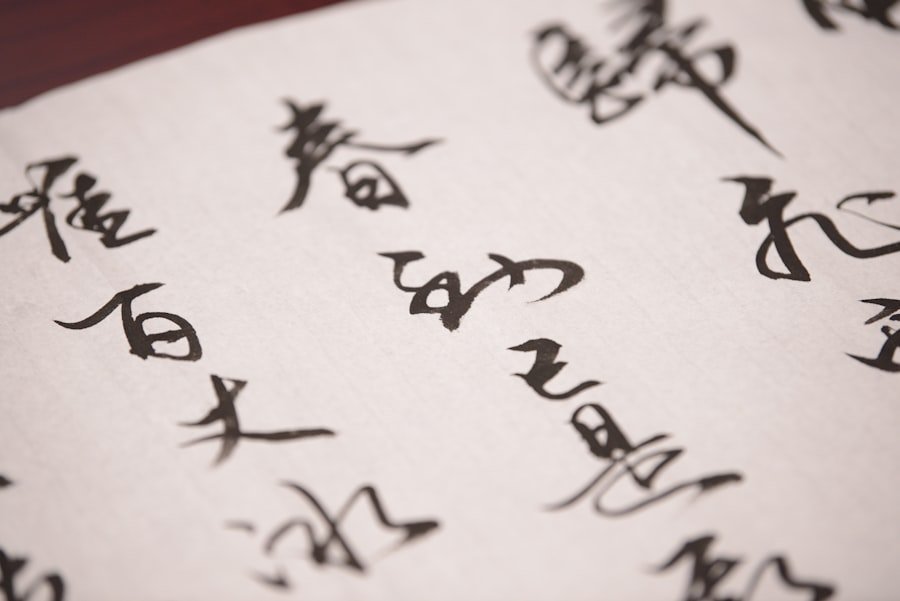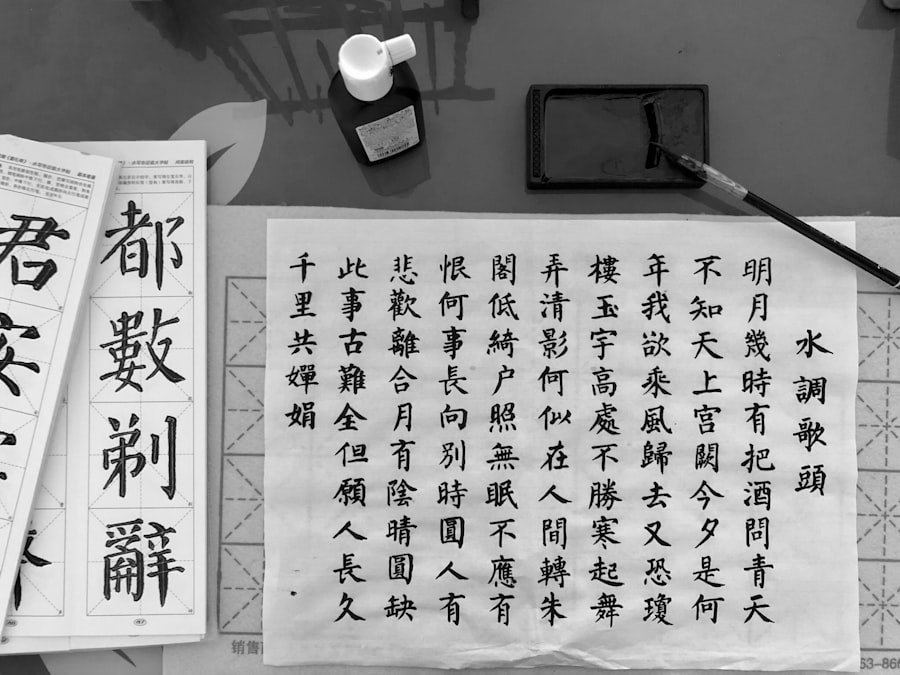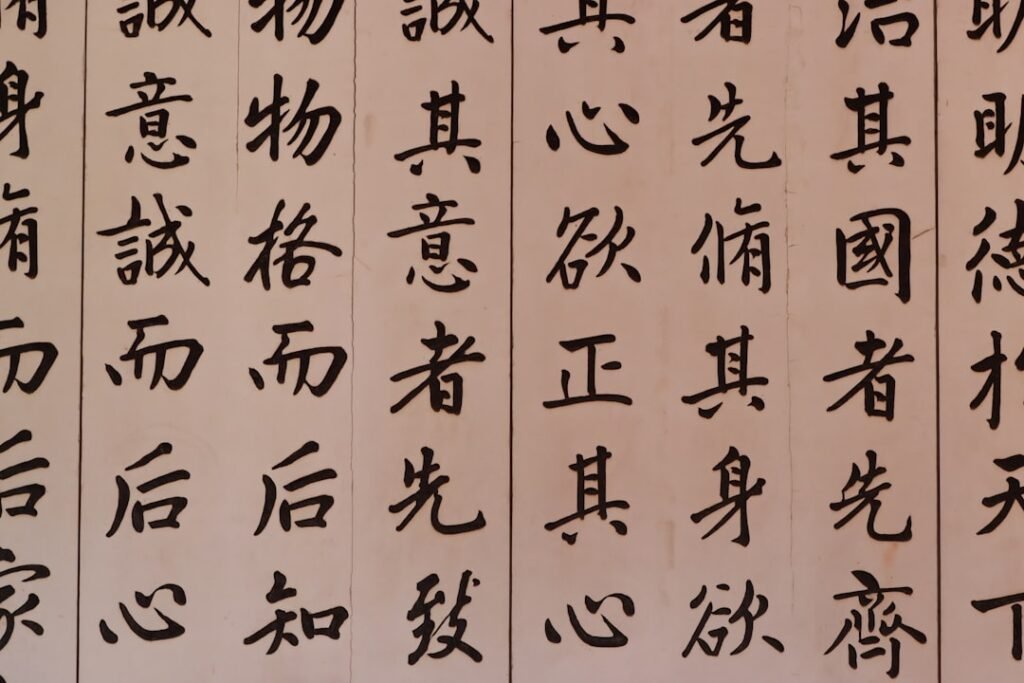Chinese brush painting, known as “guohua,” has a rich and storied history that dates back thousands of years. Its origins can be traced to the Han Dynasty (206 BC – 220 AD), where it began as a means of recording historical events and depicting the natural world. Over time, this art form evolved, influenced by various dynasties and cultural shifts, leading to the development of distinct styles and techniques.
The Tang Dynasty (618–907 AD) marked a significant turning point, as artists began to explore more expressive forms, moving beyond mere representation to convey deeper emotions and philosophical ideas. As the centuries progressed, brush painting became intertwined with poetry and calligraphy, creating a unique triad of artistic expression. The Song Dynasty (960–1279 AD) is particularly notable for its emphasis on landscape painting, where artists sought to capture the essence of nature rather than its literal appearance.
This period saw the emergence of renowned masters like Fan Kuan and Guo Xi, whose works exemplified the spiritual connection between humanity and the natural world. The Ming (1368–1644 AD) and Qing (1644–1912 AD) Dynasties further refined these techniques, leading to a flourishing of styles that continue to influence artists today. Master the art of Chinese calligraphy. Enroll now at the LC Chinese School in Oslo.
Table of Contents
ToggleSummary
- Chinese brush painting has a rich history dating back to 4000 BC, with roots in calligraphy and ink wash painting.
- Ink is highly significant in Chinese art, symbolising the artist’s emotions and spirit, and is often used in monochrome paintings.
- Chinese papermaking has evolved over centuries, with the invention of paper attributed to Cai Lun in the Eastern Han Dynasty.
- The Chinese brush is a versatile tool, allowing artists to express a wide range of emotions and create various textures in their paintings.
- The harmony between brush, ink, and paper is essential in Chinese art, with each element playing a crucial role in the artistic process.
The Significance of Ink in Chinese Art
Ink holds a central place in Chinese art, serving not only as a medium but also as a symbol of cultural heritage and intellectual pursuit. Traditionally made from soot and animal glue, Chinese ink is known for its rich, deep black hue and its ability to produce a range of tones when diluted with water. This versatility allows artists to create intricate details and subtle gradations, making it an essential component of brush painting.
The quality of ink is paramount; artists often prefer handmade ink sticks that are ground on an ink stone, allowing for a personal touch in their work. Moreover, ink is imbued with philosophical significance in Chinese culture. It represents the balance between yin and yang, embodying both strength and fluidity.
The act of grinding ink is seen as a meditative practice, fostering concentration and mindfulness. In this way, ink transcends its physical properties, becoming a conduit for artistic expression and spiritual reflection. The importance of ink in Chinese art cannot be overstated; it is the lifeblood of brush painting, enabling artists to convey their innermost thoughts and emotions through their work.
The Evolution of Chinese Papermaking

The evolution of papermaking in China is a fascinating journey that parallels the development of brush painting. Paper was invented during the Han Dynasty, with early forms made from hemp, bark, and rags. This innovation revolutionised the way art was created and shared, providing artists with a more accessible medium than silk or bamboo.
By the Tang Dynasty, paper had become widely used for both writing and painting, leading to an explosion of creativity across the arts. As papermaking techniques advanced, so too did the quality of paper available to artists. The introduction of rice paper during the Song Dynasty offered a lightweight yet durable surface that absorbed ink beautifully, enhancing the visual impact of brush strokes.
This period also saw the emergence of specialised papers designed specifically for calligraphy and painting, further elevating the art form. Today, traditional Chinese paper remains highly sought after by artists around the world, celebrated for its unique texture and ability to interact harmoniously with ink.
The Role of the Chinese Brush in Artistic Expression
The Chinese brush is an instrument steeped in tradition and artistry, playing a pivotal role in the creation of brush paintings. Characterised by its soft bristles and flexible tip, the brush allows for a wide range of strokes, from delicate lines to bold splashes of ink. The choice of brush can significantly influence an artist’s style; different brushes are used for various techniques, each contributing to the overall aesthetic of the artwork.
Beyond its practical function, the brush embodies the philosophy of “xieyi,” or “writing the idea.” This concept emphasises spontaneity and intuition in artistic expression, encouraging artists to connect with their inner selves as they create. The brush becomes an extension of the artist’s hand, translating emotions and thoughts onto paper in a fluid dance of movement. This intimate relationship between artist and brush is what makes Chinese brush painting a deeply personal and expressive art form.
The Harmony Between Brush, Ink, and Paper in Chinese Art
In Chinese art, the interplay between brush, ink, and paper creates a harmonious triad that is essential for achieving artistic excellence. Each element contributes its unique qualities to the final piece; the brush provides movement and expression, ink adds depth and richness, while paper offers texture and support. This synergy is fundamental to the practice of brush painting, where mastery over each component allows artists to convey their vision with clarity and precision.
The concept of harmony extends beyond technical considerations; it reflects a broader philosophical understanding of balance in life. In traditional Chinese thought, achieving harmony between these elements mirrors the pursuit of balance within oneself and with nature. Artists strive not only for aesthetic beauty but also for a deeper connection to their surroundings and inner selves.
This quest for harmony is what elevates Chinese brush painting from mere technique to a profound form of artistic expression.
Techniques for Using the Chinese Brush, Ink, and Paper

Mastering the techniques associated with Chinese brush painting requires dedication and practice. Artists begin by learning fundamental strokes that form the building blocks of their work. These strokes can vary from simple lines to complex shapes, each requiring a different approach with the brush.
The pressure applied to the brush can alter the thickness of lines, while varying angles can create diverse effects. In addition to stroke techniques, understanding how to manipulate ink is crucial for achieving desired results. Artists experiment with different dilutions to create varying shades and textures on paper.
The choice of paper also plays a significant role; some papers absorb ink more readily than others, affecting how colours appear once applied. Through continuous practice and experimentation with these techniques, artists develop their unique styles while honouring traditional methods.
The Symbolism of Brush, Ink, and Paper in Chinese Culture
In Chinese culture, brush, ink, and paper are not merely tools for artistic creation; they are imbued with rich symbolism that reflects deeper philosophical concepts. The brush represents creativity and spontaneity; it embodies the artist’s spirit as they translate their thoughts onto paper. Ink signifies wisdom and knowledge; its deep black colour is often associated with depth of thought and clarity of expression.
Paper serves as a canvas for ideas; it represents potential and possibility, waiting to be transformed by the artist’s hand. Together, these elements encapsulate key aspects of Chinese philosophy—particularly the importance of balance between mind and body, thought and action. They remind practitioners that art is not just about technique but also about cultivating an inner awareness that informs their creative process.
This symbolic significance enriches the practice of brush painting, making it a deeply meaningful pursuit that resonates with both artists and viewers alike.
Contemporary Interpretations of Chinese Brush Painting
In recent years, contemporary interpretations of Chinese brush painting have emerged as artists seek to blend traditional techniques with modern themes and styles. Many contemporary artists are experimenting with new materials and approaches while still honouring the foundational principles of brush painting. This fusion has led to innovative works that challenge conventional boundaries while celebrating cultural heritage.
Some artists are incorporating mixed media into their practice, combining traditional ink techniques with digital elements or other artistic forms such as sculpture or installation art. This evolution reflects a broader trend within the art world towards interdisciplinary practices that transcend cultural boundaries. As contemporary artists continue to explore new avenues for expression within this ancient tradition, they contribute to its ongoing relevance in today’s globalised society.
The Influence of Chinese Brush, Ink, and Paper on Western Art
The influence of Chinese brush painting on Western art has been profound and far-reaching. As trade routes opened up between East and West during the 17th century, European artists began to encounter Chinese art forms for the first time. The fluidity and expressiveness of brush painting captivated many Western artists who sought to incorporate these elements into their own work.
Movements such as Impressionism were particularly influenced by Chinese aesthetics; artists like Claude Monet were inspired by the use of colour and light found in traditional Chinese landscapes. Additionally, calligraphy became an important source of inspiration for abstract expressionists in the 20th century who admired its emphasis on gesture and spontaneity. This cross-cultural exchange has enriched both Western art practices and our understanding of artistic expression as a universal language.
The Cultural and Spiritual Dimensions of Chinese Brush Painting
Chinese brush painting is deeply intertwined with cultural identity and spiritual beliefs. It serves as a means of connecting with one’s heritage while also reflecting broader philosophical concepts such as harmony with nature and self-cultivation. Many practitioners view their art as a form of meditation—a way to quiet the mind and connect with deeper truths about existence.
The spiritual dimension is further emphasised through traditional practices such as “qi” (life force) cultivation during painting sessions. Artists often engage in rituals that promote mindfulness before beginning their work; this intentional approach fosters a sense of presence that enhances creativity. In this way, brush painting transcends mere aesthetics; it becomes a pathway for personal growth and spiritual exploration.
Exploring the Connection Between Chinese Calligraphy and Brush Painting
The connection between Chinese calligraphy and brush painting is profound; both art forms share similar techniques, materials, and philosophies rooted in centuries-old traditions. Calligraphy is often considered one of the highest forms of artistic expression in China due to its emphasis on fluidity, rhythm, and emotional resonance—qualities that are equally valued in brush painting. Many artists seamlessly integrate calligraphy into their paintings as a way to enhance meaning or convey poetic sentiments alongside visual imagery.
This interplay enriches both disciplines while highlighting their shared origins within Chinese culture. As students explore these connections at institutions like LC Chinese School in Oslo—where dedicated courses on calligraphy are offered—they gain insight into how these two art forms complement one another while fostering an appreciation for their historical significance. At LC Chinese School in Oslo, students have the opportunity to delve into both calligraphy and brush painting through specialised courses designed to nurture creativity while honouring tradition.
These classes provide an immersive experience where participants can learn about techniques passed down through generations while also exploring contemporary interpretations that resonate with modern sensibilities. In conclusion, Chinese brush painting is not merely an artistic practice; it embodies centuries’ worth of cultural heritage intertwined with philosophy, spirituality, and personal expression. As students engage with this rich tradition at LC Chinese School in Oslo—whether through calligraphy or painting—they become partakers in an ongoing dialogue that celebrates creativity across time and space.
Master the art of Chinese calligraphy. Enroll now at the LC Chinese School in Oslo.







